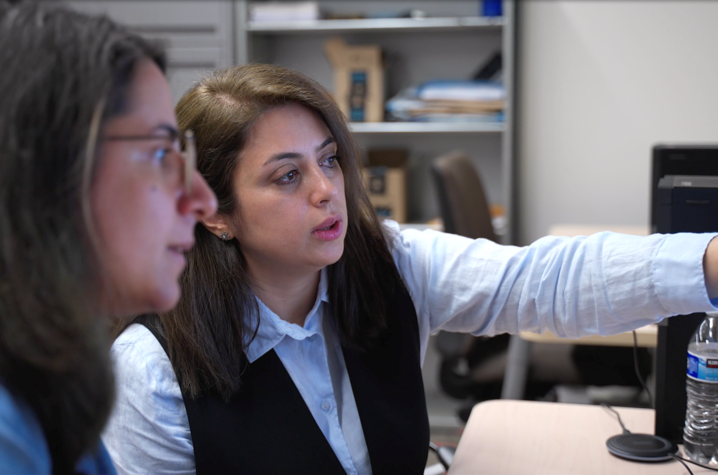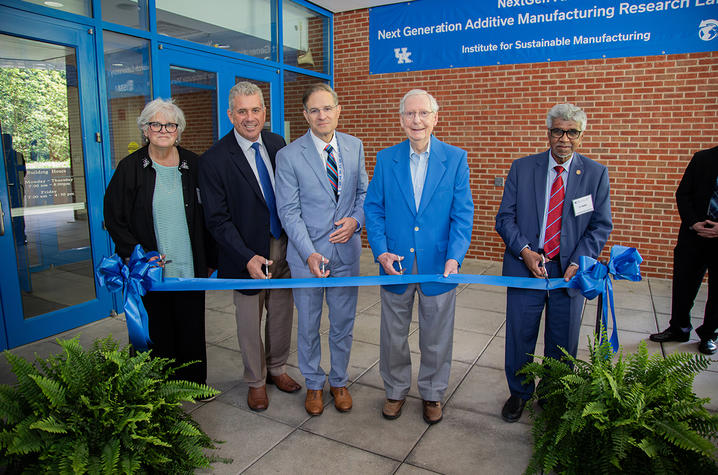The Greek characters, πορφύραc, revealed as the word “PURPLE,” are among the characters extracted from the Herculaneum scrolls.
BREAKTHROUGH: Discovery made from within 2,000 year-old Herculaneum scrolls
October 16, 2023
The Herculaneum scrolls are among the most iconic and inaccessible of the world’s vast collection of damaged manuscripts, but since being burned and carbonized by the catastrophic eruption of Mt. Vesuvius in 79 CE, they’ve been deemed “unreadable.”
Until now.
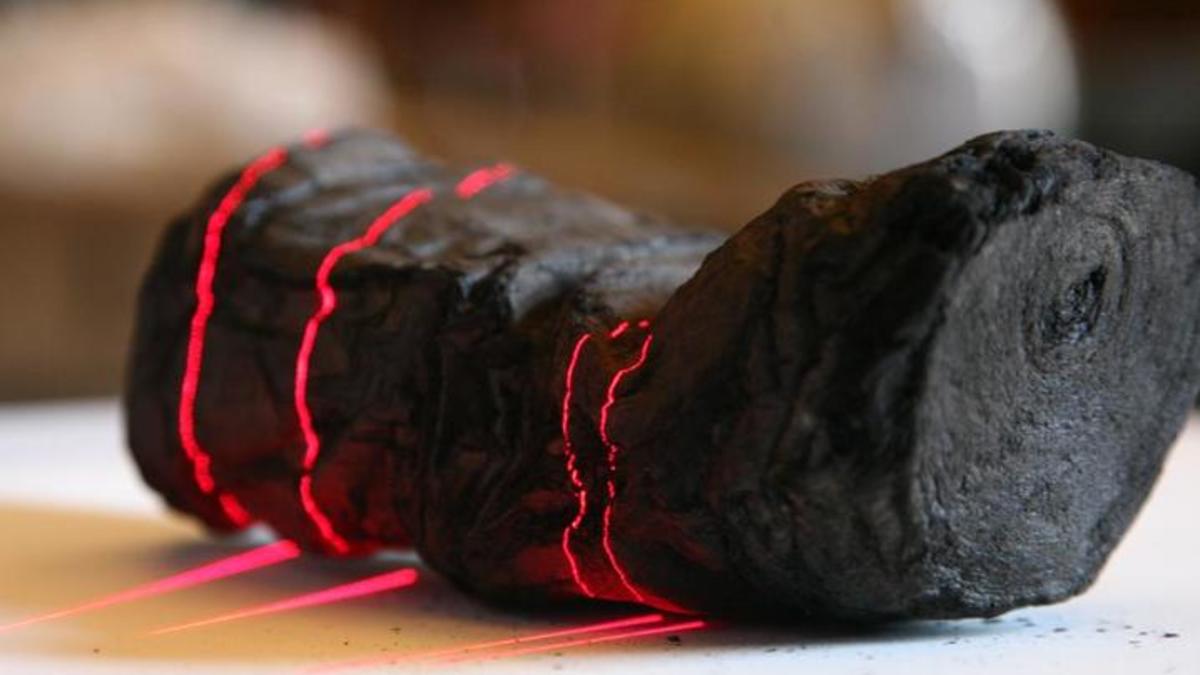
Herculaneum scroll with red laser lines being scanned at Institut de France by Brent Seales and his team. Photo Credit: EduceLab.
The Herculaneum scrolls are among the most iconic and inaccessible of the world’s vast collection of damaged manuscripts.
Since being burned and carbonized by the catastrophic eruption of Mt. Vesuvius in 79 CE, they’ve been deemed “unreadable.”
For more than 2,000 years, wisdom from the only library to survive from ancient times remained locked away.
Until now.
The Reveal
On Thursday, Brent Seales, a computer science professor at the University of Kentucky, (in partnership with EduceLab: A Digital Restoration Initiative, the Library of the Institut de France and founders of the Vesuvius Challenge) hosted a conference and livestream event at UK.
Together, they presented a monumental breakthrough — announcing an entire word has been read from part of the still-closed Herculaneum scrolls. Additionally, the technical approach Seales and his team developed was critical in the process to recover the writing.
“These texts were written by human hands at a time when world religions were emergent, the Roman Empire still ruled and many parts of the world were unexplored,” Seales said. “Much of the writing from this period is lost. But today, the Herculaneum scrolls are unlost.”
The Greek characters, πορφύραc, revealed as meaning "purple dye" or "clothes of purple," are among the multiple characters and lines of text that have been extracted by Vesuvius Challenge contestants Luke Farritor and Youssef Nader.
“This is just incredibly exciting,” Farritor, a 21-year-old SpaceX intern, said. “The EduceLab team did a really great job of building a solid foundation for progress, especially for virtually unwrapping the scrolls. I was able to use their prior work, as well as the observations of other contestants, to build a machine learning detector to find these letters.”
Shortly after Farritor's revelation, Nader, an Egyptian biorobotics graduate student in Berlin, independently discovered the same word in the same area — with even clearer results. “It took me a few days to process this, because I couldn’t believe my eyes,” he added. “It was exhilarating — reading text we did not understand, but we knew was left to us by people thousands of years ago. It was like peeking through a time machine into the past.”
The image (seen above) depicting the text comes from a wrap of papyrus buried deep within the completely unopened, intact, carbonized scroll.
To authenticate the findings, expert papyrologists assessed each letter shape. Those on the review committee represent the countries who currently possess scrolls from Herculaneum (England, France and Italy).
Upon seeing the images, many of them gasped in excitement.
“It’s extremely exciting to be reading entire words, not just sequences of letters, from within a scroll," Federica Nicolardi, assistant professor in papyrology at the Università degli Studi di Napoli Federico II, continued. "This scroll has remained untouched for centuries — protecting its content in a state that we can imagine as completely free from gaps. The most unique feature of the Library of Herculaneum is that the preserved texts are entirely unknown from other sources. However, I’m confident we will soon be able to read more, understand the topic of the work, identify the scribe if already present in the collection and date the script.”
Nicolardi also says, the word “purple” has not yet been read in the opened Herculaneum scrolls. "Purple dye was highly sought-after in ancient Rome and was made from the glands of sea snails, so the term could refer to purple colour, robes, the rank of people who could afford the dye or even the molluscs," she continued. "But more important than the individual word is reading anything at all. The advance gives us the possibility to recover the text of the entire scroll."
How Did We Get Here?
Two-decades ago, Seales dared to do the impossible.
What followed was a long, and often arduous, journey to create an artificial intelligence (AI) program that could read the Herculaneum scrolls without ever physically opening them.
In March, Seales — along with Silicon Valley investors Nat Friedman (instigator and sponsor), Daniel Gross (sponsor) and JP Posma (project lead) — began leading a global competition to read the charred scrolls after he demonstrated an AI program can successfully extract letters and symbols from X-ray images of the unrolled papyri.
As part of the Vesuvius Challenge, Seales’ team released its software and thousands of 3D X-ray images of two rolled-up scrolls and three papyrus fragments.
The two unopened scrolls, belonging to the Institut de France in Paris, are among hundreds unearthed in the 1750s when excavations at the buried villa revealed an extravagant library of Epicurean philosophical text. They are believed to have belonged to a Roman statesman — possibly Lucius Calpurnius Piso Caesoninus, the father-in-law of Julius Caesar.
Even after being in the ground for 1,700 years, the carbonized papyri did not decay. Rather, they were entombed in the solid volcanic flow of mud, dirt, water and gasses, then desiccated by the heat, carbonized and preserved.
The hope was, and still is, that $1 million in prizes would encourage global researchers and scholars to build upon the AI technology and accelerate the decoding.
Teams that enter the challenge are competing for a grand prize of $700,000 — awarded to the first to read four passages of text from the inner layers of the scrolls by the end of 2023. Progress prizes include $50,000 for accurately detecting ink on the papyri from the 3D X-ray scans.
“What the challenge allowed us to do was to enlist more than a thousand research teams to work on a problem that would normally have about five people working on it,” Seales explained. “The competitive science aspect of this project is just fascinating.”
Now, six months since the competition began, contestants Farritor and Nader have virtually unwrapped many layers of papyrus from within (including the one shown) by building upon Seales’ software. Farritor (first place) and Nader (second place) separately developed machine learning methods to reveal the ink within X-ray CT scans of the scroll — resulting in the same findings.
“I was walking around at night and randomly checked my most recent code outputs on my phone,” Farritor said. “I didn't expect any substantial results, so when half a dozen letters appeared on my screen, I was completely overjoyed.”
Nader is continuing to build upon his models and has already discovered more lines of text, which is currently being reviewed by papyrologists. “I hope the revealed text will show just how fascinating and complex ancient civilizations were,” he said. “In learning more about them, we can also learn more about how we can make our world better.”
For their findings, Farritor and Nader have been given the “First Letters Prize,” which awards $40,000 to the first person or team to find more than 10 letters in a continuous region of the scroll and $10,000 to the second. You can learn more about the award criteria here.
“Our goal was to engage a global audience in an exciting, scientific competition that would create acceleration and advancement to the point where we are now,” Posma said. “The competition continues, but today, we have achieved a major milestone. We’ll learn a lot from this: what techniques work best, do we need to adjust how we do segmentation, etc.”
The competition’s results are impressive. But it’s also important to take a look back — to understand how this discovery came to be over the course of two decades.
“We also acknowledge the many years of work that it has taken and the technological advances that have been applied to the problem of reading this material,” Seales said. “With humility, we acknowledge the non-linear — and often unpredictable — outcomes of research, which is rarely expected, and not ever guaranteed, to lead directly to success.”
From Invisibility to Readability: A Timeline
2002
Seales and team created a system for “virtual unwrapping” from X-ray computed tomography and demonstrated it worked on examples that were built in the lab.
2005
At a lecture in Oxford, Seales proposed that the still-closed Herculaneum scrolls could be read through noninvasive digital methods.
2009
Seales and his team traveled to the Institut de France to perform micro-CT scans of the Herculaneum scrolls. The study provided the first-ever volumetric images — exposing the challenges ahead due to the complexity of the internal structure.
2013
Seales worked as a Visiting Scientist at Google's Cultural Institute — beginning to scale up the effort to acquire more data and build new methods to handle the massive data sizes and the challenge of virtual unwrapping the tangled layers. During this time, he published results in the leading journal for Herculaneum research.
2016
Seales' team developed the Volume Cartographer, a revolutionary computer program for locating and mapping 2D surfaces within a 3D object. The software pipeline is used with micro-CT to generate extremely high-resolution images — enabling the ability to read a document without ever needing to physically open it.
Later that year
The team used “virtual unwrapping” to read text from the ancient En-Gedi scroll — revealing it to be the beginning of the Book of Leviticus. It is believed to be one of the oldest Hebrew biblical texts ever found, outside of the Dead Seas Scrolls.
2019 (March)
Seales received funding from the National Endowment for the Humanities (NEH) targeted toward developing the AI algorithms for detecting and amplifying the evidence of the carbon-based ink from deep within the folds of the scrolls.
2019 (early May)
Herculaneum ink is different from that used to pen ancient Hebrew and medieval documents. It's made of carbon, which is invisible to the human eye in micro-CT images.
To address this problem, the team developed a neural network that "learns" how patterns in the data look when ink is present — as opposed to how patterns appear when no ink is present. A machine learning algorithm is trained to detect and recognize the unique ink. The teams’ groundbreaking work in this area was featured in a PLOS ONE article.
2019 (late May)
Seales receives a $2 million grant from The Andrew W. Mellon Foundation — giving the team the materials access, funding support and technical approach needed to solve the 2,000-year-old mystery.
The prestigious Mellon grant supported the electronic compilation and dissemination of the entire Herculaneum collection, which was spread across four different institutions: the Bodleian Library at Oxford University, the British Library, the Institut de France and the Biblioteca Nazoinale di Napoli.
2021
UK announced a $14 million mid-scale infrastructure grant from the National Science Foundation to build EduceLab. Seales gathered a team of experts from the Stanley and Karen Pigman College of Engineering and the UK College of Arts and Sciences for this collaborative user facility focused on developing innovative AI solutions for heritage science.
2023 (March)
In March, a global competition was launched to read the charred scrolls after demonstrating that AI can successfully extract letters and symbols from X-ray images of the unrolled papyri. As part of the Vesuvius Challenge, Seales’ team released its software and thousands of 3D X-ray images of two rolled-up scrolls and three papyrus fragments. The hope was that $1 million in prizes would encourage global researchers and scholars to build upon the AI technology and accelerate the decoding of the only intact library to survive from ancient times.
2023 (August)
Stephen Parsons, a member of the research team, defended a comprehensive Ph.D. thesisdescribing the successful AI-inspired techniques and the systematic, scientific basis for the results that are now emerging.
Today
The technical framework, accelerated by contestants participating in the Vesuvius Challenge, has succeeded. The “virtual unwrapping” has been applied to the Herculaneum scrolls — revealing Greek writing from deep within. The text is readable by the world’s eminent papyrologists (scholars who read the ancient, extant papyrological record), which is verification the technique works.
What’s Next? The End of the Beginning
The race is on.
With the competition still underway, and the $700,000 prize still up for grabs, the team has launched a large-scale effort to read every unopened papyrus scroll in the collection, which includes more than 600 rolled scrolls that remain sealed and unreadable.
All winning submissions have been made open source, so future contestants can use the body of work as a starting point.
Seales believes reading the entire collection of Herculaneum scrolls is not only possible, but will be the largest discovery from the ancient world to date.
“We have pursued the dream of reading this extremely challenging material from Herculaneum. We have now proven that it is possible. There is a huge emotional component, which is powerful and inspiring.” he said. “Overcoming damage incurred during a 2,000-year span is no small challenge. But that’s what researchers do — together, we conquer the seemingly impossible."
Seales is considered the foremost expert in the digital restoration of cultural antiquities. To this day, his quest to uncover ancient Western wisdom is ever-evolving. But he doesn’t do this work alone. You can learn more about the UK students at the center of this research here.
Additionally, more information about the Vesuvius Challenge can be found here, and details about EduceLab: A Digital Restoration Initiative can also be found online.
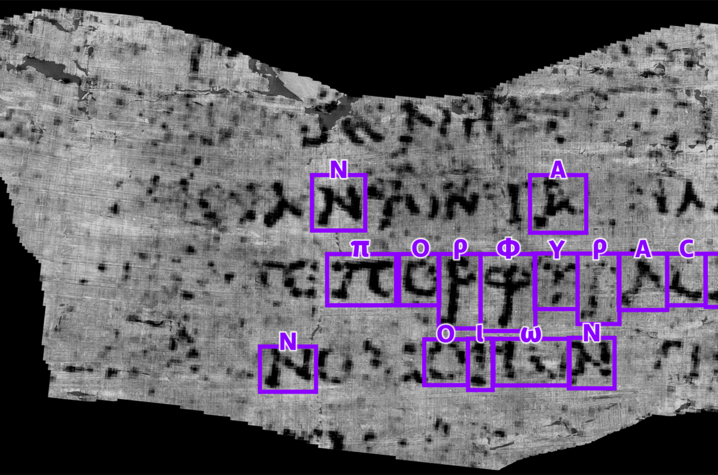
The Greek characters, πορφύραc, revealed as the word “PURPLE,” are among the multiple characters and lines of text that have been extracted by Vesuvius Challenge contestant Luke Farritor. Photo Credit: Vesuvius Challenge.
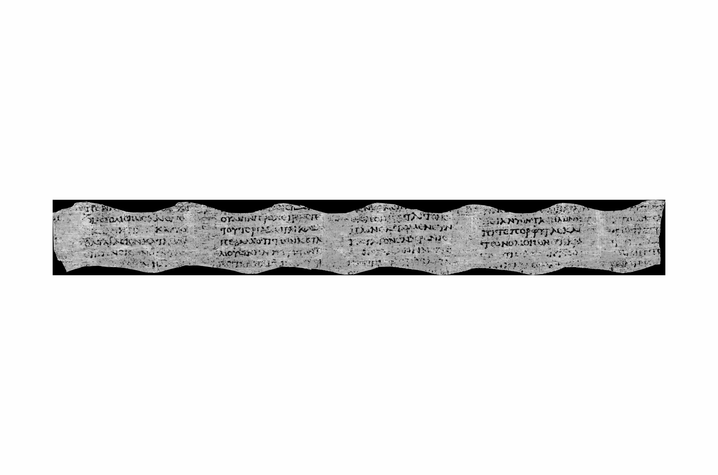
The image (seen above) depicting the text comes from a wrap of papyrus buried deep within the completely unopened, intact, carbonized scroll.
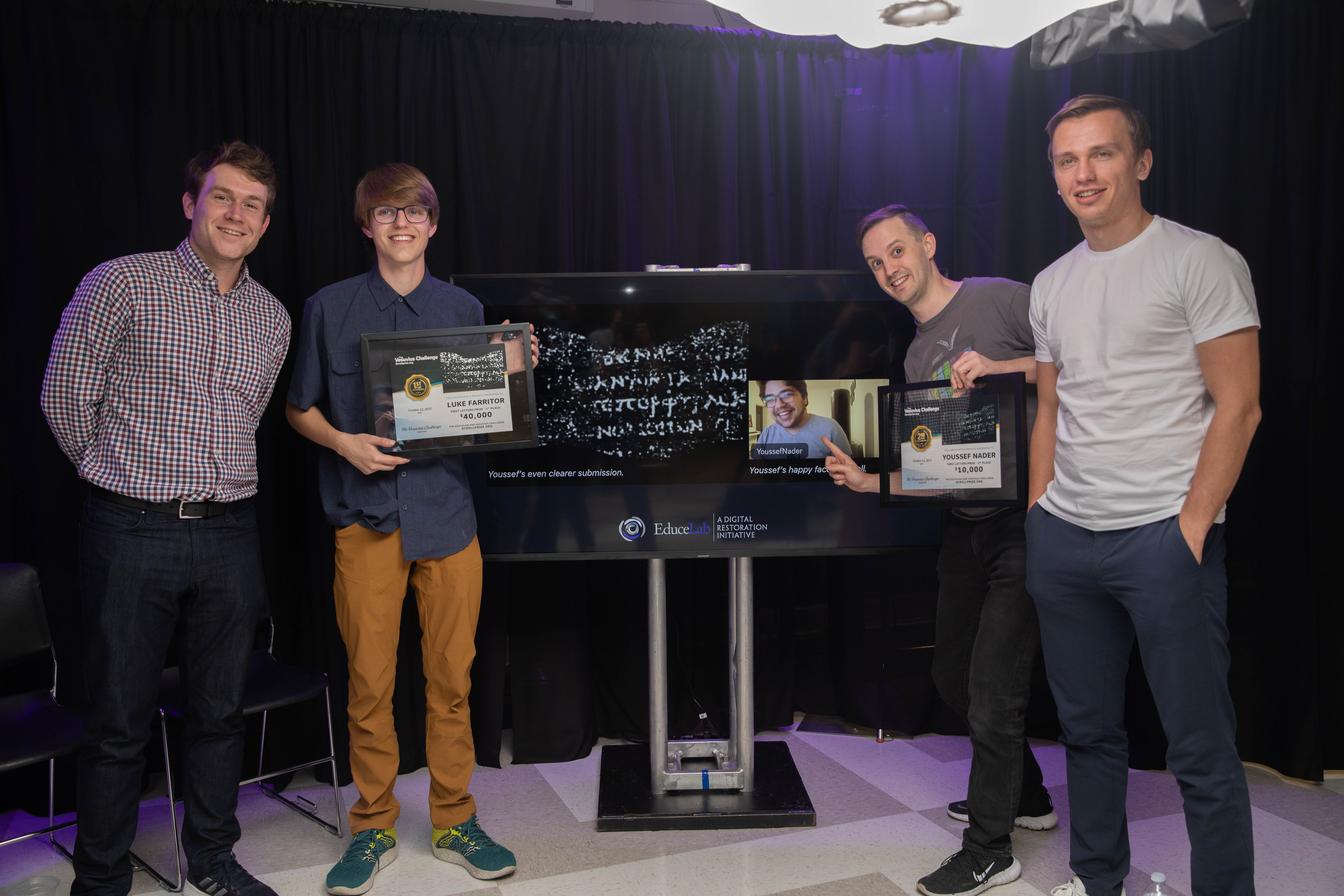
Winners of the Vesuvius Challenge First Letters Prize, Luke Farritor and Youssef Nader, are awarded.
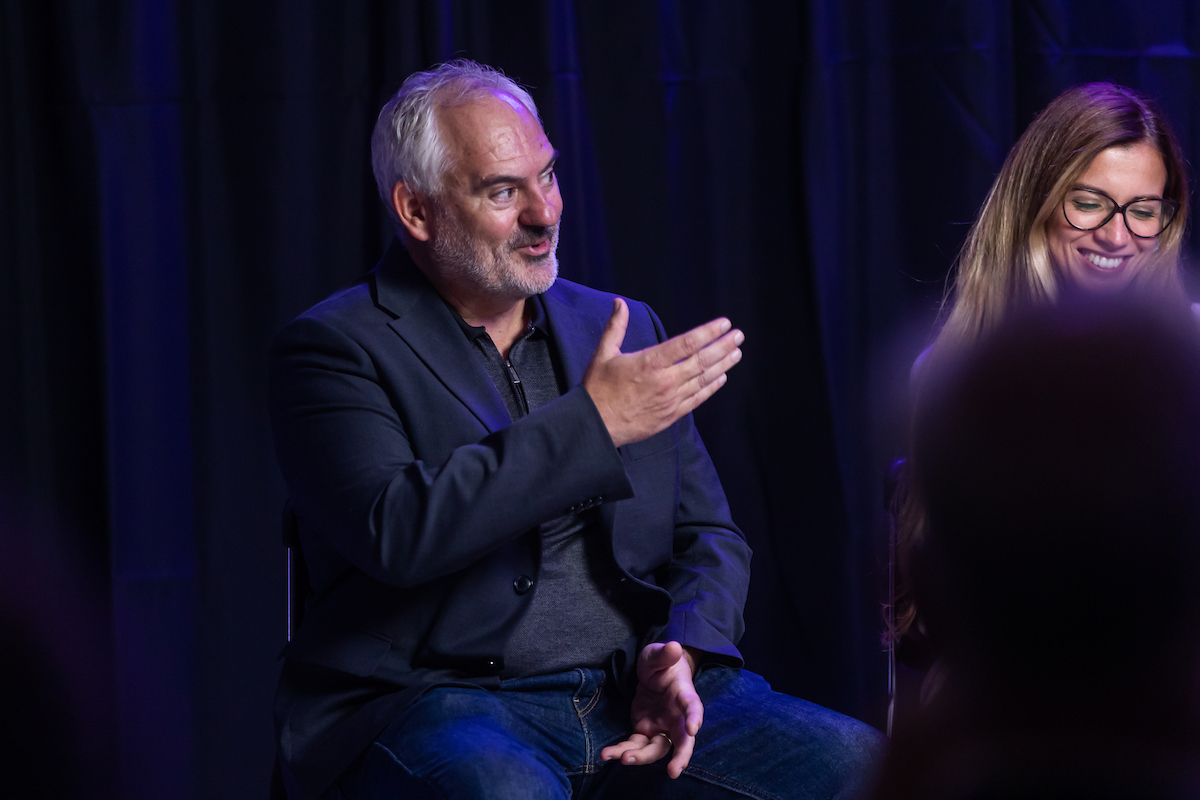
Dr. Brent Seales speaks at press conference at the University of Kentucky.
